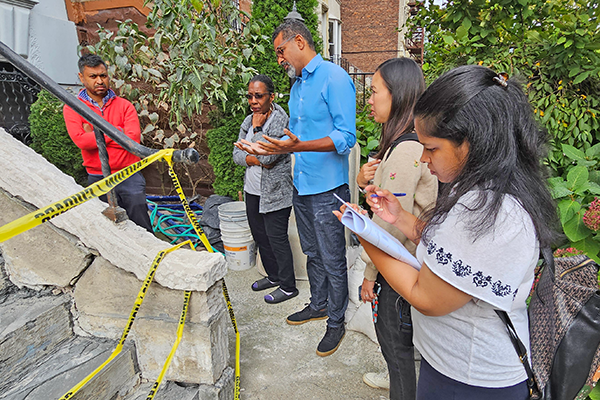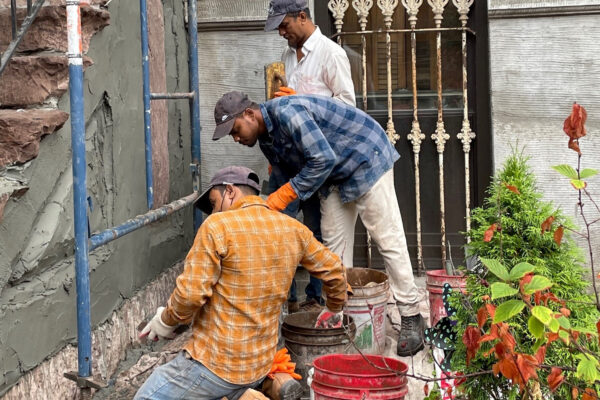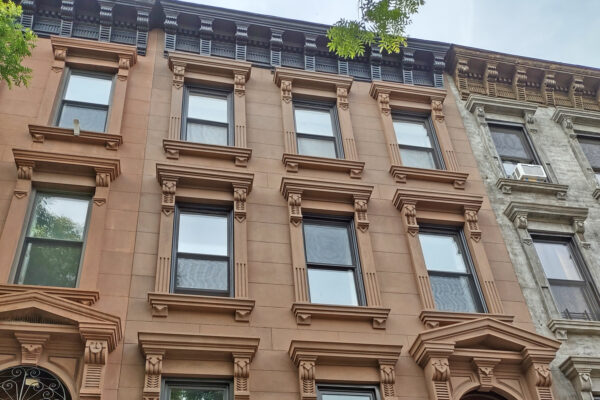Funding Historic Restorations
The New York City Historic Properties Fund offers low-interest loans and project management assistance to owners of historic residential, non-profit, religious, and commercial properties throughout the City – mostly in low- to moderate-income communities. Since 1982, the Fund has assisted over 274 buildings. It is one of the largest, private revolving loan funds in the country used exclusively for historic preservation.
The Conservancy’s professional staff and consulting architects work with every loan recipient to manage the complex process of restoring an older building.
Loan Criteria
Loans generally apply to exterior restoration work or structural repairs and range from $80,000 to $300,000. Interest rates are generally low and terms usually range from five to ten years. The Conservancy makes a special effort to keep closing costs as low as possible.
Loans can be considered for owners of individually designated landmarks, properties in local historic districts, or buildings listed or eligible for listing in the State or National Register of Historic Places. The building must be in the five boroughs of New York City. The program focuses on assisting property owners of buildings in low and moderate-income neighborhoods throughout the City. The Conservancy can help you determine the landmark status of your building. If the building is eligible, the applicant must also show financial capability. Loans must be secured through a first or second mortgage or other acceptable collateral.
To discuss your building project, either call Kyunhea West at 212-995-5260 or fill out and return to her attention a completed Property Profile Form, which you can download here.
The first step in applying for a loan is to complete the Property Profile. Staff will review the proposed project and possibly conduct a site visit. If the Fund staff determines the project is eligible for funding, they will work with you to develop a formal loan application. Application review, credit checks, and financial analyses are necessary before presenting the loan request to the Fund’s Board of Directors for approval.
New York City Historic Properties Fund – Early History
January 8, 1982 is the date of the tripartite agreement that established the New York City Historic Properties Fund and called for its initial and subsequent capitalizations by the developer of the Federal Archive Building. Since its inception, the Fund has been a major financing vehicle in the five boroughs of New York and a critical programmatic component of The New York Landmarks Conservancy which administers it.
The genesis of the Fund – now one of the largest private revolving loan funds in the country that is used exclusively for historic preservation – was the culmination of over seven years of extensive work by the Landmarks Conservancy shortly after it became operational in 1973. The Conservancy was asked by the U.S. General Services Administration (GSA), the custodian of the Federal Archive Building in Greenwich Village, to help find new uses for the Archive Building, an imposing Romanesque Revival structure (Willoughby J. Edbrooke et al., 1892-99). The property was designated as a City landmark in 1966 and then listed in the National Register of Historic Places. It served for many years as an archival storage center for federal documents when a decision was made to move the archives to New Jersey, where storage could be in a one-level facility. Hence, this massive (over 400,000 square feet) structure was to become vacant and surplus to GSA in the mid-1970s. At that time, in the midst of the City’s fiscal crisis, the Archive Building was seen as a white elephant, its location in the far West Village rendering it sub-prime to many – a viewpoint proven to be erroneous by the ascent of property values in that neighborhood since then.
The Conservancy commissioned the Graduate School of Architecture & Planning at Columbia University to analyze the property and devise a reuse proposal for it. The final report in 1975 called for the conversion of the Archive Building to a mixture of commercial, residential, and community uses. Importantly, it put forth the concept of transferring the property from the Federal government for private development and commercial uses, using a recent amendment to the Federal Surplus Property Act. And from this framework came the idea of using the net revenues from the redevelopment of the Archive Building to capitalize a revolving loan fund.
Over the next several years, the Conservancy served in essence as the project manager for GSA, issuing a request for proposals to developers, selecting a developer, and working through many public agencies at all levels to put the transaction together. The agreement of January 8, 1982, with the initial payment of approximately $470,000 into the revolving loan fund was historic unto itself. In 1989, the redevelopment of the Archive Building was completed and consisted of 479 units of market-rate housing, almost 40,000sf of below-market-rate space for community uses, and ground-level retail. Between 1982 and 1998, the developer contributed approximately $7 million into the Fund.
The first loan of the Fund was in 1983: $55,000 to the Washington Square United Methodist Church at 135 West 4th Street, just a few blocks east of the Archive Building. The loan funds were used to restore cracked plaster and ceiling panels in the sanctuary.







